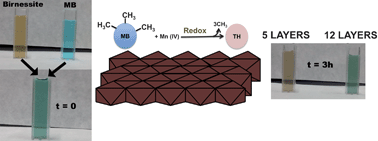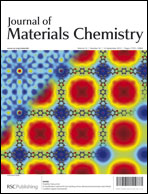Layered manganates from soft-templates: preparation, characterization and enhanced dyedemethylation capabilities
Abstract
A soft-template method for the synthesis of layered manganate (KxMnO2, birnessites) compounds with a relatively good control at the nanoscale regime on the number of octahedral layers (thickness) is described. The soft-template method is based on the stabilization of reverse micelles at moderate temperatures and the optimization of parameters to modulate the size of the templates while still preserving their stability during the formation of layered manganates. Degradation experiments of a model system (


 Please wait while we load your content...
Please wait while we load your content...